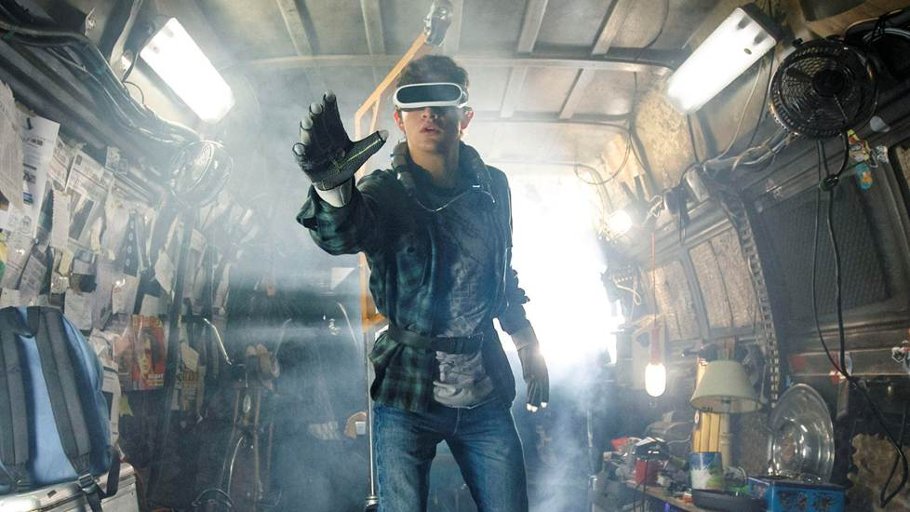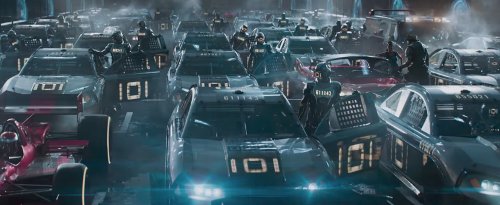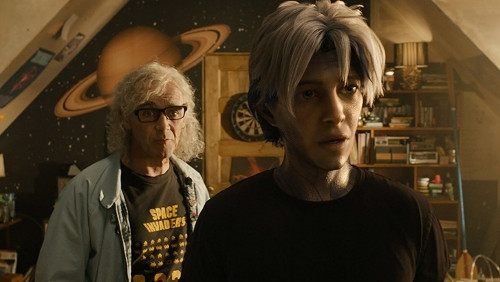 Iran’s Attack on Israel
Iran’s Attack on Israel


5 min read
How do we know which world is real and which is fake?
Is this the real life, or is this fantasy?
Ready Player One, Steven Spielberg’s new hit movie, tries to answer this question. It is a massive pop-culture showcase produced by a big corporation about the evils of too much pop culture and big corporations. More specifically, it’s a cautionary tale about burying ourselves in the digital world while the real world deteriorates in the background.
The Oasis is an escape from the real world, because sometimes that world is too hard.
The movie takes place in a dystopian future of 2045 where the world is overpopulated, everyone lives in poverty, and even the internet seems to be gone. And apartments, for some reason. Everyone lives in huge stacks of trailers.
 And traffic is ridiculous.
And traffic is ridiculous.
And no one is doing anything about it. Instead, everyone spends their waking hours retreating into a virtual reality world called the Oasis. The Oasis also allows people to be whatever they want to be, including any characters from pop culture that Warner Brothers was able to get the rights to. It’s like Spielberg is saying, “You like obsessing over pop culture? Okay, here’s everything you want, in one big movie. Now go outside and play.”
The story takes place five years into a contest announced by James Halliday, the reclusive maker of this world, shortly before his death. In the game, he has hidden an Easter egg – or an afikoman, if you will – and whoever finds it will become sole owner of the Oasis. This is the kind of contest you come up with when you don’t have a wife or kids to leave things to.
The way to find the egg is by studying pop-culture clues from Halliday’s youth and solving a series of counterintuitive puzzles.
But the problem, critics say, is that the movie is trying to teach its audience to go outside, but the only way for the characters to win these contests is by obsessing over the game PLUS pop-culture references that for them are 60 years old.
Plus the digital world is great; after all, you get to present the ideal version of yourself. And you don’t have to worry about bad breath. And people with weird birthmarks or maligned minorities can pretend to be whoever they want and up their social standing. In the other world, no one knows if you’re Jewish.
In the book the movie is based on, Wade, the main character of the piece, has a religious elderly friend, Mrs. Gilmore, who helps him with his 1980s trivia. Wade scoffs at her religion, which has no meaning for him, but then decides that it’s “a pleasant fantasy that keeps her going, which is exactly what the hunt is for me.”
 Pictured: Wade and religion.
Pictured: Wade and religion.
The movie doesn’t mention this. Perhaps Spielberg was uncomfortable with it.
In truth, religion and spirituality is the real world, and everything else – the physical world of work and play – is the Oasis. It’s the exact opposite. In fact, the Talmud says, “God looked in the Torah and created the world.” The Torah is the blueprint of creation. Whereas the physical world, like the Oasis, is impermanent and in some ways, illusory.
The Oasis is an escape from the real world, because sometimes that world is too hard. It’s not always easy to be Jewish. Making the decision to start keeping kosher is not easy when your friends are all going out to their favorite non kosher restaurant. Refraining from that business deal on Friday night when you’ve just decided to start keeping Shabbat is not easy. Spirituality is not easy.
But just because something is easy, it doesn’t make it right. Or real. Like with Oasis.
The real world is the one that has permanence. The money from that Friday night business deal will come and go. As will the taste of that cheeseburger. But when choosing to perform a mitzvah – we connect to something that is Infinite – and that action will be around forever. That’s the real world, or what we call the olam ha’emet – the World of Truth.
Wade is in the contest because he wants to control the Oasis, which is the real world for him. But by the end, he realizes that the digital world is only valuable inasmuch as it affects the real world. He has a ton of money in the virtual world, but in the real world, he sleeps on top of a washing machine.
Wade wins the contest, of course, or else he wouldn’t have been the main character, and he gets to meet the Halliday’s avatar. And what Halliday says – which he didn’t realize until he was dying, alone and regretful – is that Wade shouldn’t neglect reality, because even though reality is intimidating, it’s the only place where one can find actual meaning.
 “He’s right behind me, isn’t he?”
“He’s right behind me, isn’t he?”
Which is why, once Wade inherits the digital world, he shuts it down for a couple of days a week. A Sabbath, if you will, to connect with what’s real.
You can’t live in an Oasis. Eventually, you have to get back into the desert and make your way to the Promised Land and connect with that which is Infinite.
